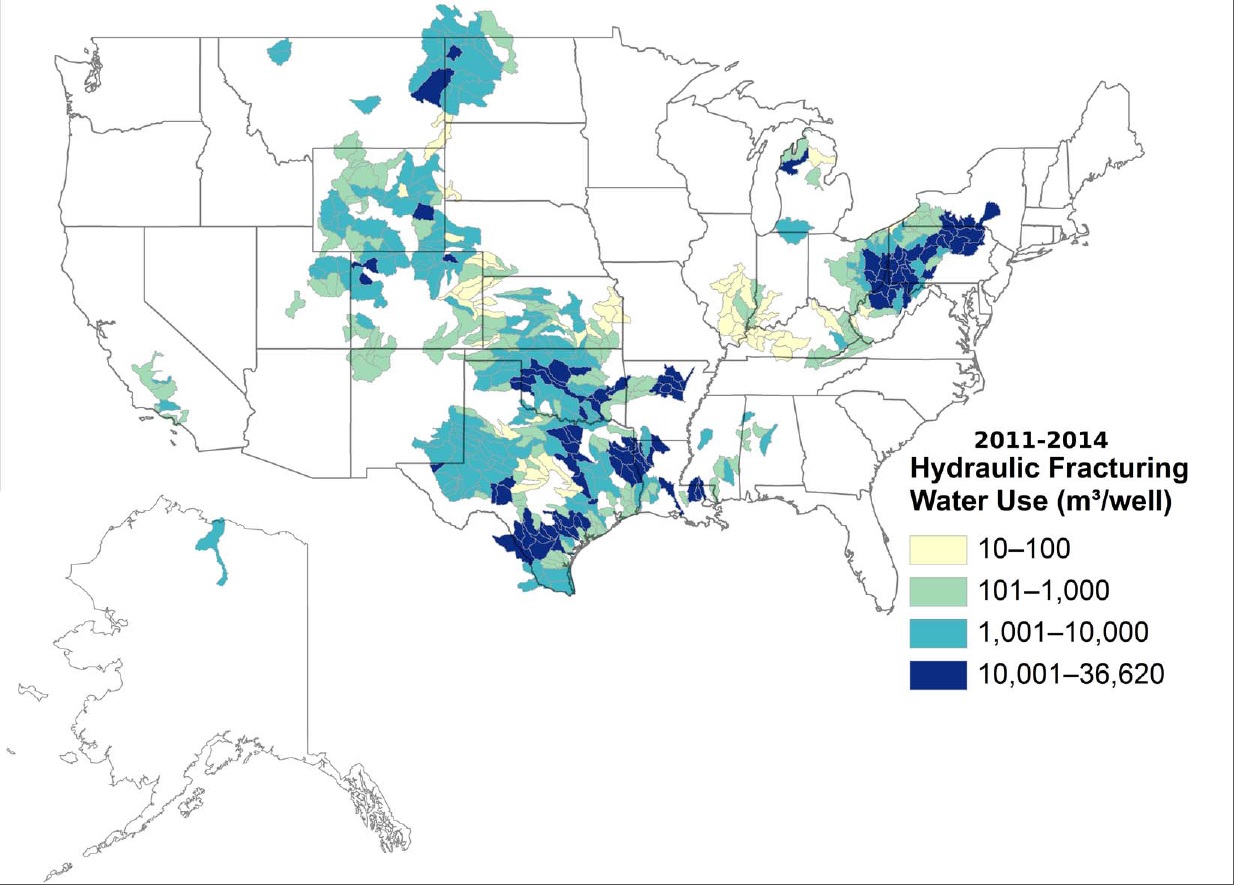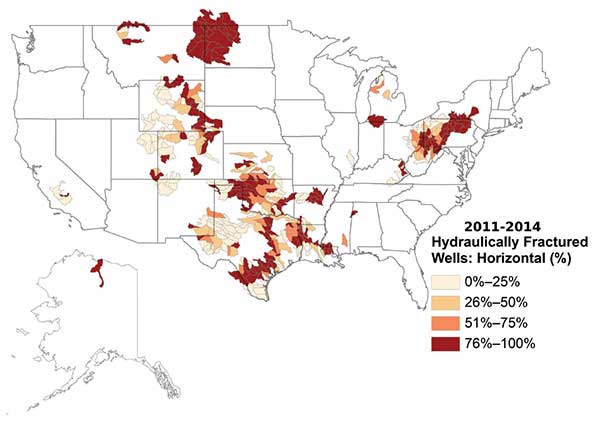
Features
Research
Water Quality
Water used for fracking varies widely across U.S.
July 8, 2015 By Ground Water Canada
 July 8, 2015, Reston, VA – The amount of water required to hydraulically fracture oil and gas wells varies widely across the United States, according to the United States Geological Survey (USGS).
July 8, 2015, Reston, VA – The amount of water required to hydraulically fracture oil and gas wells varies widely across the United States, according to the United States Geological Survey (USGS).
July 8, 2015, Reston, VA – The amount of water required to hydraulically
fracture oil and gas wells varies widely across the United States,
according to the United States Geological Survey.
The research – which is the first national-scale analysis and map of hydraulic fracturing water usage – found that water volumes for hydraulic fracturing within watersheds across the United States range from as little as 2,600 gallons to as much as 9.7 million gallons per well.
 |
| This map shows the average water use in hydraulic fracturing per oil and gas well in watersheds across the United States. Image courtesy of USGS. |
In addition, from 2000 to 2014, median annual water volume estimates for hydraulic fracturing in horizontal wells increased from about 177,000 gallons per oil and gas well to more than 4 million gallons per oil well and 5.1 million gallons per gas well. Meanwhile, median water use in vertical and directional wells remained below 671,000 gallons per well.
For comparison, an Olympic-sized swimming pool holds about 660,000 gallons.
“One of the most important things we found was that the amount of water used per well varies quite a bit, even within a single oil and gas basin,” said USGS scientist Tanya Gallegos, the study’s lead author. “This is important for land and resource managers, because a better understanding of the volumes of water injected for hydraulic fracturing could be a key to understanding the potential for some environmental impacts.”

|
| This map shows the percentage of oil and gas wells that use horizontal drilling in watersheds across the United States. Image courtesy of USGS. |
Horizontal wells are those that are first drilled vertically or directionally (at an angle from straight down) to reach the unconventional oil or gas reservoir and then laterally along the oil or gas-bearing rock layers. This is done to increase the contact area with the reservoir rock and stimulate greater oil or gas production than could be achieved through vertical wells alone.
However, horizontal wells also generally require more water than vertical or directional wells. In fact, in 52 out of the 57 watersheds with the highest average water use for hydraulic fracturing, over 90 per cent of the wells were horizontally drilled.
Although there has been an increase in the number of horizontal wells drilled since 2008, about 42 per cent of new hydraulically fractured oil and gas wells completed in 2014 were still either vertical or directional. The ubiquity of the lower-water-use vertical and directional wells explains, in part, why the amount of water used per well is so variable across the United States.
The watersheds where the most water was used to hydraulically fracture wells on average coincided with parts of the following shale formations:
- Eagle Ford (within watersheds located mainly in Texas)
- Haynesville-Bossier (within watersheds located mainly in Texas and Louisiana)
- Barnett (within watersheds located mainly in Texas)
- Fayetteville (within watersheds located in Arkansas)
- Woodford (within watersheds located mainly in Oklahoma)
- Tuscaloosa (within watersheds located in Louisiana and Mississippi)
- Marcellus & Utica (within watersheds located in parts of Ohio, Pennsylvania, West Virginia and within watersheds extending into southern New York)
Shale gas reservoirs are often hydraulically fractured using slick water, a fluid type that requires a lot of water. In contrast, tight oil formations like the Bakken (in parts of Montana and North Dakota) often use gel-based hydraulic fracturing treatment fluids, which generally contain lower amounts of water.
This research was carried out as part of a larger effort by the USGS to understand the resource requirements and potential environmental impacts of unconventional oil and gas development. Prior publications include historical trends in the use of hydraulic fracturing from 1947 to 2010, as well as the chemistry of produced waters from hydraulically fractured wells.
The report is entitled “Hydraulic fracturing water use variability in the United States and potential environmental implications” and has been accepted for publication in Water Resources Research. More information about this study and other USGS energy research can be found at the USGS Energy Resources Program.
Print this page